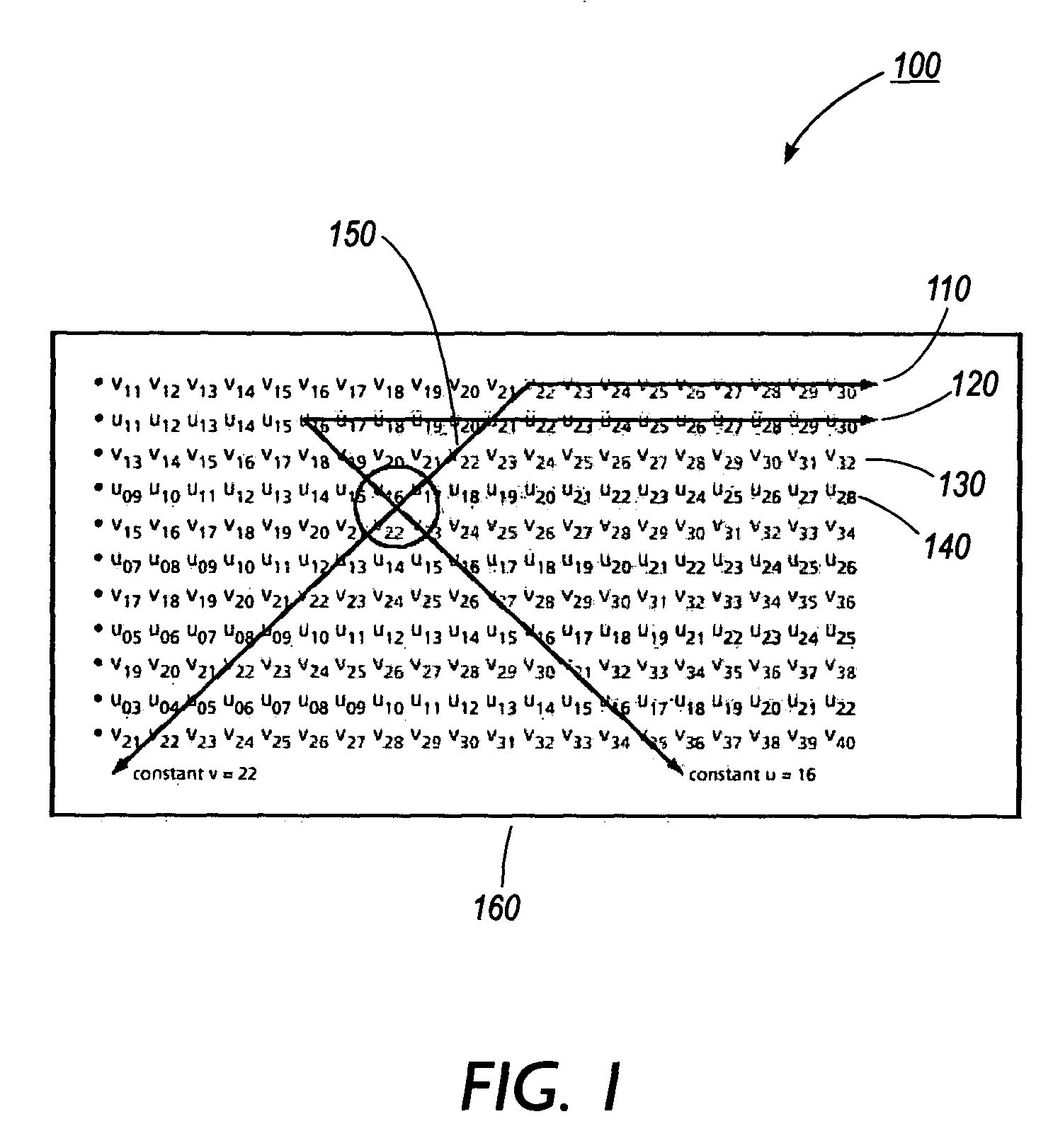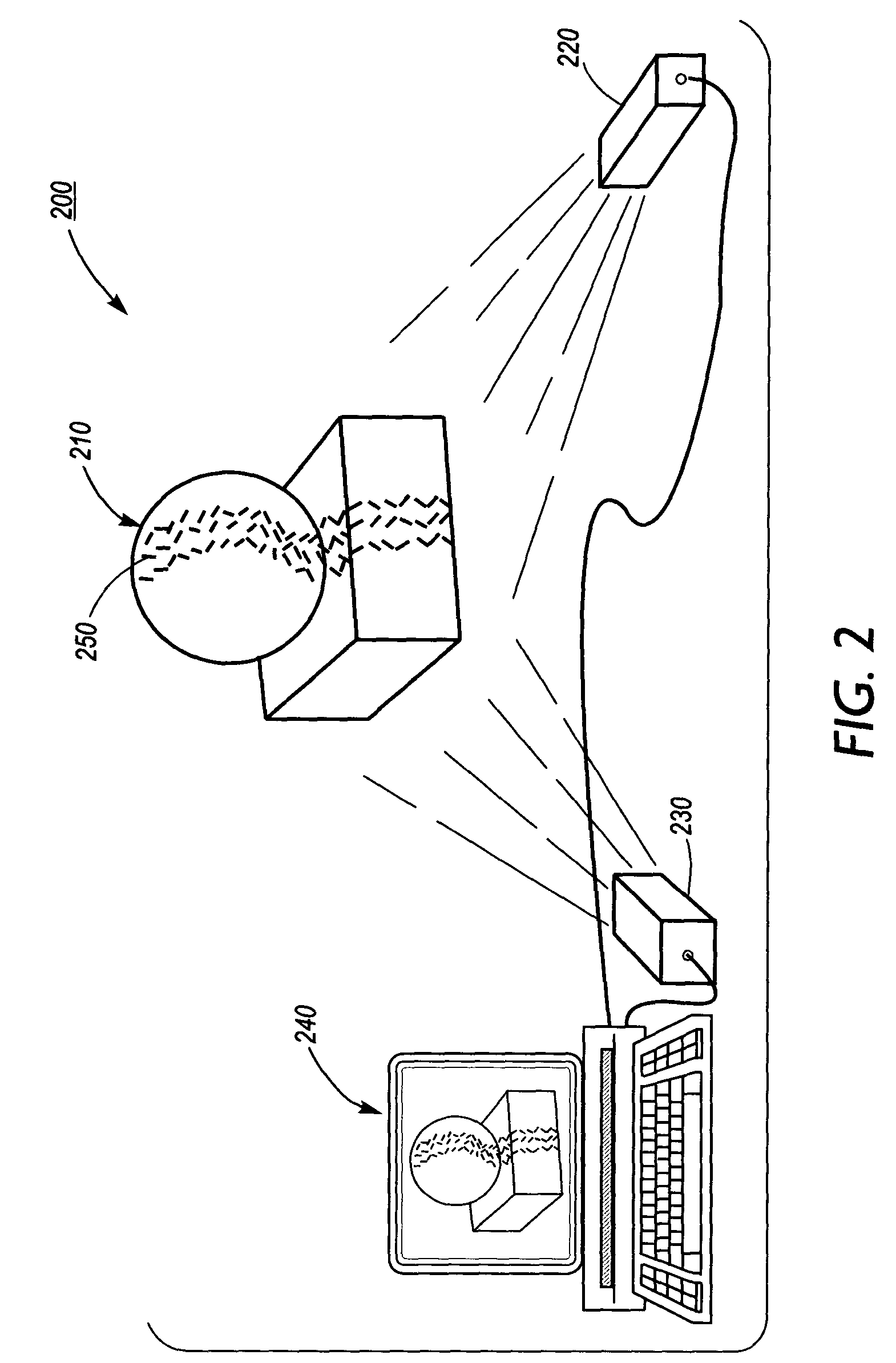Three-dimensional active vision with glyph address carpet
a three-dimensional active vision and glyph technology, applied in the field of surface reconstruction, can solve the problems of slow calibration and ambiguous registration, insufficient information to enable the mapping of stripes, and the existing structured light technique (typically using repeated patterns such as stripes or lattices) suffers from slow calibration and ambiguity registration, and the image captured by the camera is interpreted
- Summary
- Abstract
- Description
- Claims
- Application Information
AI Technical Summary
Benefits of technology
Problems solved by technology
Method used
Image
Examples
Embodiment Construction
[0017]DataGlyph technology, based on self-clocking glyph code, is a particularly effective and flexible encoding technology of data embedding pattern. Among other advantages, the technology uses positive marks of “slash” and “back-slash” of the same size to represent “0” and “1”. A pattern of such marks is much more robust under distortion and partial occlusion than a pattern with non-lattice structure, or of non-positive marks. This technology is described more fully in U.S. Pat. No. 6,076,738 (Bloomberg et al., “Self-Clocking Glyph Shape Codes”) and U.S. Pat. No. 5,825,933 (Hecht, “Parallel Propagating Embedded Binary Sequence for Parameterizing Two Dimensional Image Domain Code Pattern in Two Dimensional Address Space”) as well as U.S. patent application Ser. No. 10 / 270,698 (Hecht, “Method and Apparatus for Implementing Spatial Pointers and Labeling Via Self-clocking Glyph Codes with Absolute Addressing for Determination and Calibration of Spatial Distortion and Image Properties”...
PUM
 Login to View More
Login to View More Abstract
Description
Claims
Application Information
 Login to View More
Login to View More - R&D
- Intellectual Property
- Life Sciences
- Materials
- Tech Scout
- Unparalleled Data Quality
- Higher Quality Content
- 60% Fewer Hallucinations
Browse by: Latest US Patents, China's latest patents, Technical Efficacy Thesaurus, Application Domain, Technology Topic, Popular Technical Reports.
© 2025 PatSnap. All rights reserved.Legal|Privacy policy|Modern Slavery Act Transparency Statement|Sitemap|About US| Contact US: help@patsnap.com



